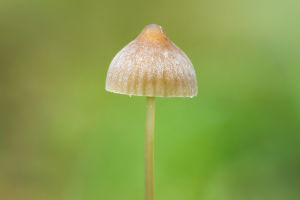Cacti are remarkable plants known for their resilience, thriving in some of the harshest environments on Earth.
From scorching deserts to rocky landscapes, cacti have unique adaptations that allow them to survive where most other plants would perish.
Here’s a look at the fascinating mechanisms behind their tenacious survival.
1. Water Storage: Nature’s Reservoirs
The most notable characteristic of cacti is their ability to store water. Cacti have thick, fleshy stems that act as reservoirs, holding water to sustain the plant during prolonged droughts. These stems are ribbed or pleated, allowing them to expand as they absorb water and contract when it is scarce.
Additionally, the waxy coating on the stems, known as the cuticle, minimizes water loss by reducing evaporation. This coating forms an impermeable barrier, protecting the water stored inside, allowing cacti to survive even during extreme dry spells.
2. Spines: Defense and Water Collection
Cacti are covered in spines, which serve multiple roles in their survival. They are a defense mechanism against herbivores, preventing animals from consuming the plant for its water content. But spines do more than protect.
Spines provide shade to the cactus, lowering surface temperatures and reducing water loss. They also trap moisture from the air, such as dew or fog, which condenses on the spines and trickles down to the base of the plant.
In this way, spines help conserve water and enhance the cactus’s ability to survive arid environments.
3. Shallow, Extensive Roots
The root system of cacti is another marvel. Most cacti have shallow but widespread root networks, allowing them to quickly absorb available moisture from rain or morning dew. These roots are highly efficient at soaking up water, sometimes within minutes of rainfall.
In some species, roots grow deeper to access underground water reserves. However, shallow roots are often more advantageous in deserts, where rain is sparse and brief. This root structure allows cacti to maximize water intake and store it for future use.
4. Efficient Photosynthesis
Cacti use a unique photosynthesis process called Crassulacean Acid Metabolism (CAM). Unlike most plants that open their stomata (pores) during the day to absorb carbon dioxide, cacti open theirs at night. This adaptation minimizes water loss since cooler nighttime temperatures reduce evaporation.
At night, cacti absorb carbon dioxide and store it as malic acid. In the day, they use this stored carbon dioxide to photosynthesize while keeping their stomata closed, conserving water. This process allows cacti to produce energy without wasting precious water resources.
5. Dormancy During Harsh Conditions
Cacti can enter a state of dormancy during extreme conditions like prolonged drought or heat. During dormancy, the plant conserves energy and water by slowing down its metabolic processes, halting growth, and minimizing water use.
This ability allows cacti to survive unfavorable conditions and resume growth when the environment becomes more hospitable.
The survival of cacti is a testament to nature's adaptability. With their water storage capabilities, protective spines, efficient root systems, unique photosynthesis process, and ability to go dormant, cacti have evolved to endure some of the most challenging environments on Earth.
Their tenacity not only showcases resilience but also highlights the incredible adaptability of the natural world, offering inspiration and wonder to those who learn about them.


